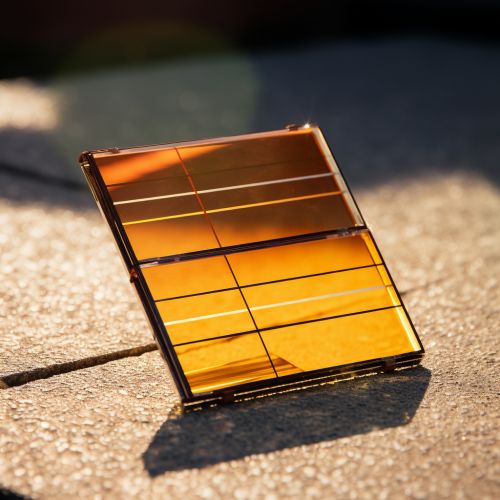Advances in Photovoltaic Materials for Solar Energy Harvesting
Introduction
Photovoltaic materials are essential components of solar cells, which convert sunlight directly into electricity. Over the past few decades, significant advances have been made in the development of these materials, leading to improvements in the efficiency and cost-effectiveness of solar energy harvesting. This article will explore these advances in detail, focusing on the various types of photovoltaic materials and their properties, as well as the latest research and future prospects in this field.
Types of Photovoltaic Materials
Photovoltaic materials can be broadly classified into three categories: crystalline silicon, thin-film, and emerging photovoltaics.
Crystalline Silicon
Crystalline silicon is the most widely used photovoltaic material, accounting for about 90% of the global market. It is divided into two types: monocrystalline and polycrystalline silicon.


Monocrystalline silicon is made from a single crystal structure, which allows electrons to move more freely and results in higher efficiency. Polycrystalline silicon, on the other hand, is made from multiple crystal structures, which reduces the efficiency but also the cost.
Thin-Film Photovoltaics
Thin-film photovoltaics are made by depositing one or more thin layers of photovoltaic material onto a substrate. The main types of thin-film photovoltaics are amorphous silicon (a-Si), cadmium telluride (CdTe), and copper indium gallium selenide (CIGS).


Amorphous silicon has a non-crystalline structure, which results in lower efficiency but also lower cost. CdTe and CIGS have higher efficiencies, but their production involves rare and toxic materials, which raises environmental and supply chain concerns.
Emerging Photovoltaics
Emerging photovoltaics are new types of photovoltaic materials that are still in the research and development stage. These include perovskite solar cells, organic photovoltaics, and quantum dot solar cells.


Perovskite solar cells are made from a class of materials known as perovskites, which have a specific crystal structure. They have shown great potential in terms of efficiency and cost, but their stability and durability are still being improved.
Organic photovoltaics are made from organic compounds, which are abundant and non-toxic. They have lower efficiencies, but their flexibility and versatility open up new applications, such as building-integrated photovoltaics.
Quantum dot solar cells are made from quantum dots, which are tiny particles that can be tuned to absorb different wavelengths of light. They have shown high efficiencies in the lab, but their scalability and stability are still being researched.
Advances in Photovoltaic Materials
The field of photovoltaic materials has seen significant advances in recent years, driven by the need for more efficient and sustainable solar energy harvesting.
Advances in Crystalline Silicon
In the realm of crystalline silicon, advances have been made in the purification and manufacturing processes, leading to higher efficiencies and lower costs. For example, the introduction of the PERC (Passivated Emitter and Rear Cell) technology has improved the efficiency of monocrystalline silicon cells by reducing electron recombination.
Advances in Thin-Film Photovoltaics
In the field of thin-film photovoltaics, advances have been made in the deposition techniques and material compositions, leading to higher efficiencies and better environmental performance. For instance, the development of non-toxic alternatives to CdTe and CIGS, such as CZTS (copper zinc tin sulfide), has addressed some of the environmental and supply chain concerns.
Advances in Emerging Photovoltaics
In the area of emerging photovoltaics, advances have been made in the material synthesis and device architectures, leading to higher efficiencies and improved stability. For instance, the discovery of new perovskite compositions and the development of tandem solar cells, which combine perovskite and silicon cells, have pushed the efficiency of perovskite solar cells to over 25%.
Future Prospects
The future of photovoltaic materials looks promising, with ongoing research and development aimed at improving the efficiency, cost-effectiveness, and sustainability of solar energy harvesting.
In the case of crystalline silicon, the focus is on further improving the efficiency and reducing the cost, with technologies such as TOPCon (Tunnel Oxide Passivated Contact) and HJT (Heterojunction with Intrinsic Thin layer) showing promise.
In the realm of thin-film photovoltaics, the focus is on developing non-toxic and abundant materials, with technologies such as kesterite and iron pyrite showing potential.
In the area of emerging photovoltaics, the focus is on improving the stability and scalability, with technologies such as tandem perovskite-silicon cells and quantum dot concentrator cells being explored.
